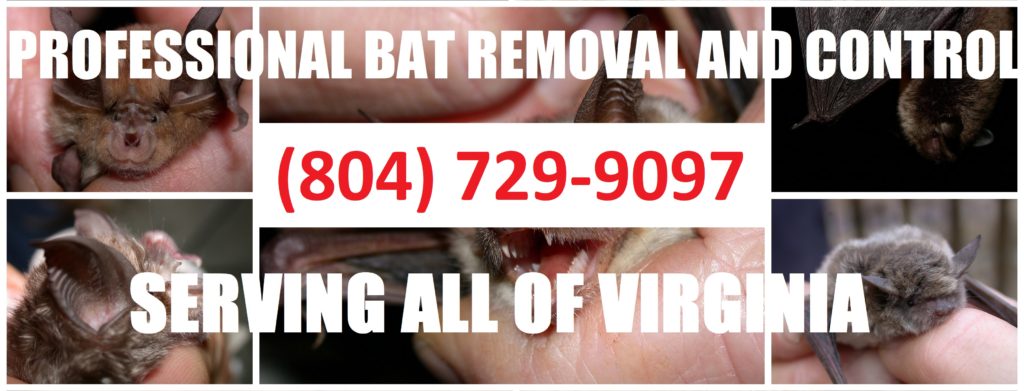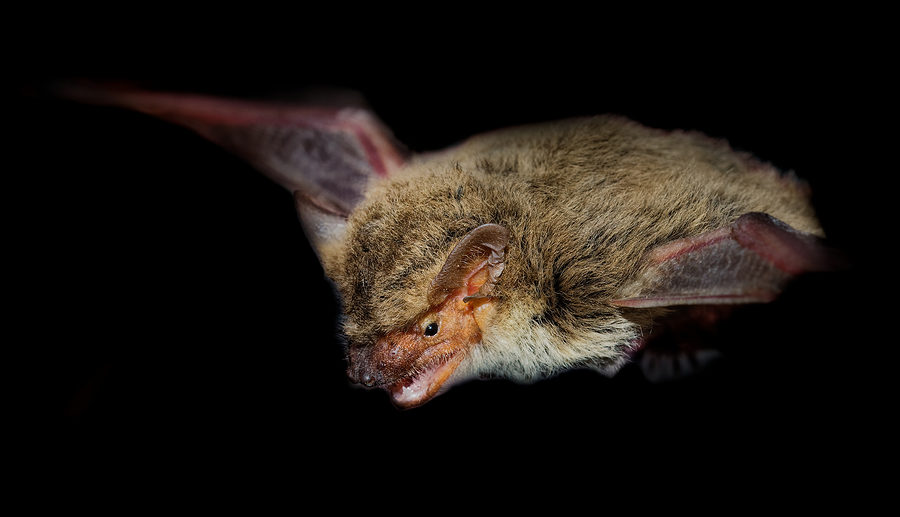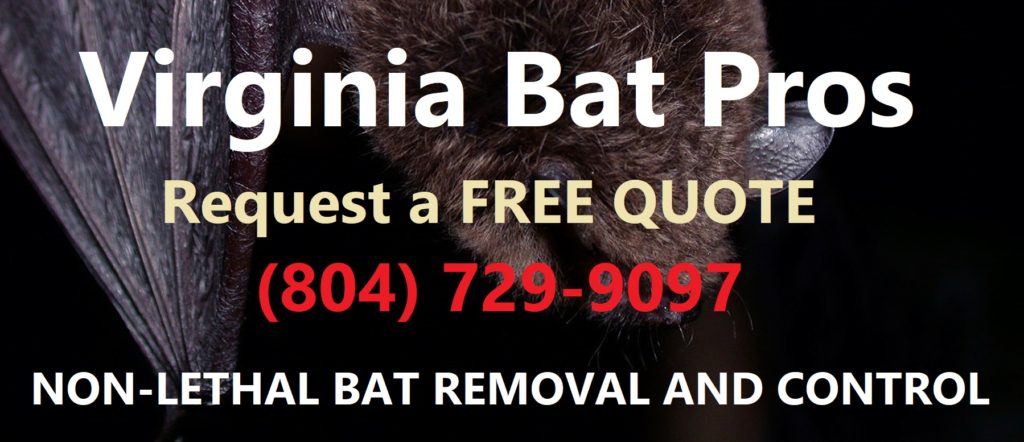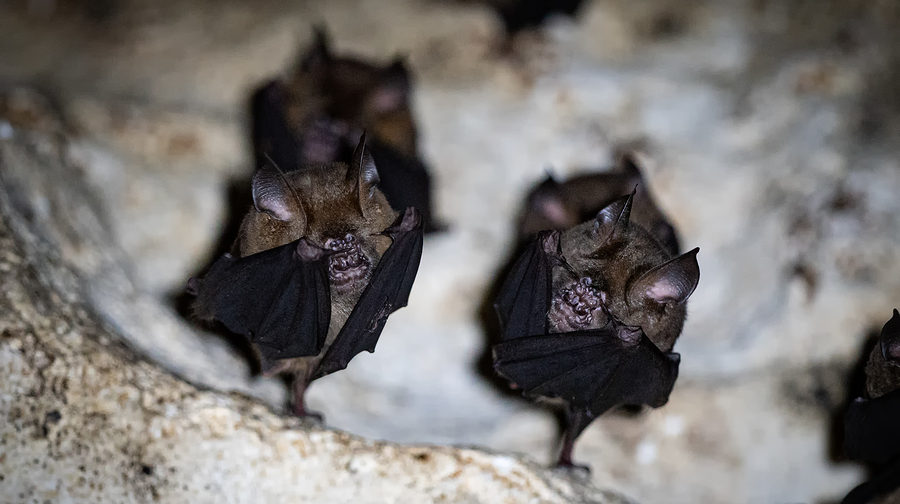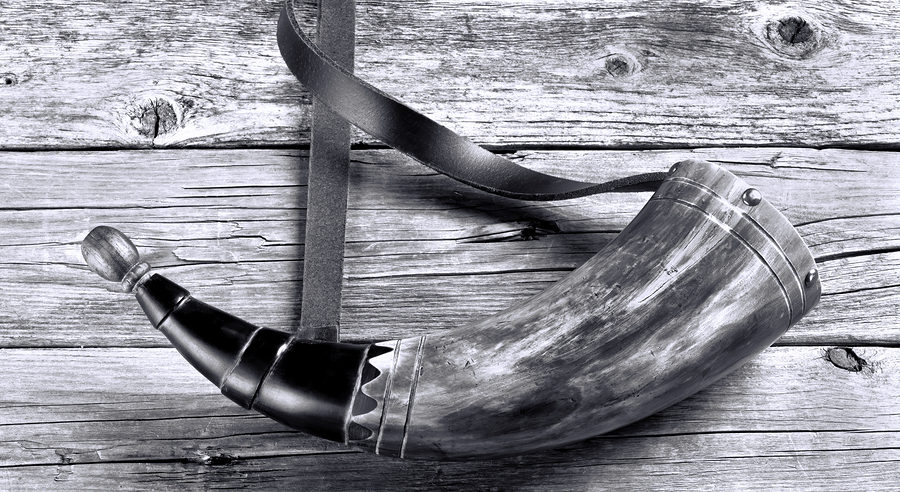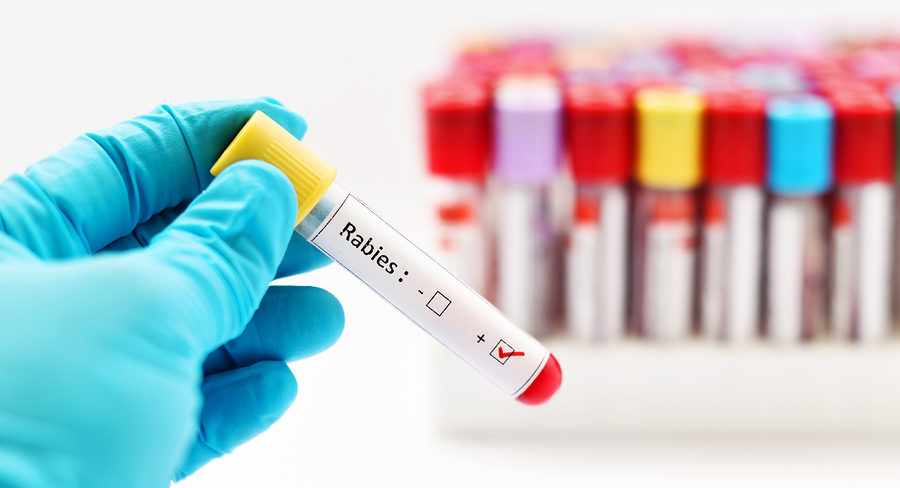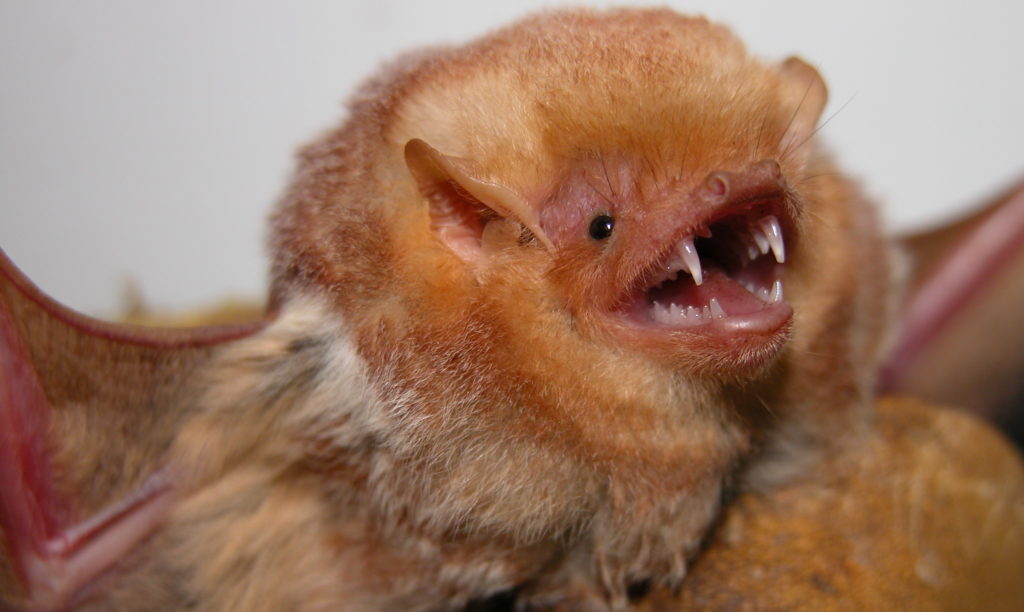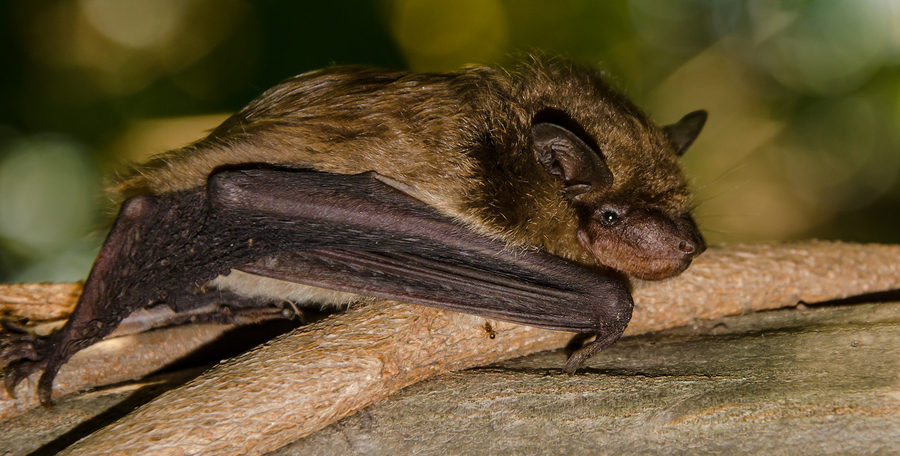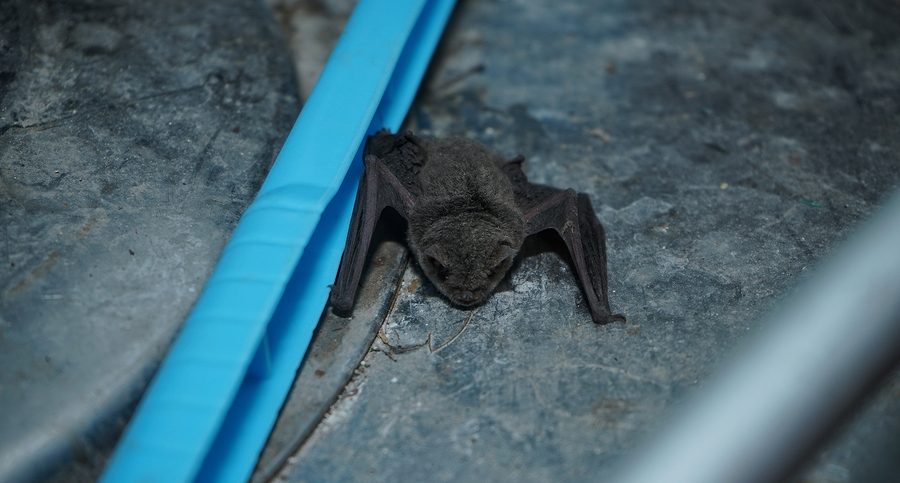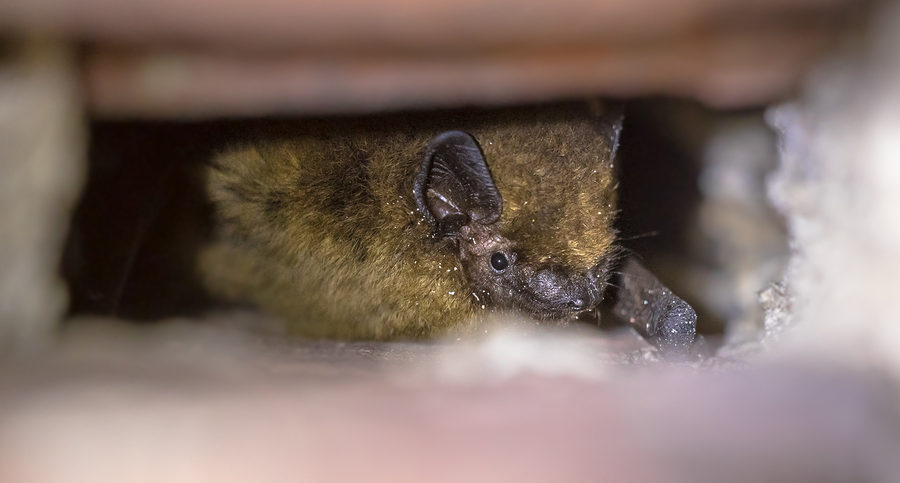Although they may look a lot alike, and they are both part of the Vespertilionidae family, the Big Brown bat and the Little Brown bat are two completely separate species in a different genus. When you scroll down the scientific classification of both species, they have the same Kingdom (Animalia), Phylum (Chordata), Class (Mammalia), Order (Chiroptera), and even Family (Vespertilionidae). But once you reach the genus, they separate.
Continue reading to learn where and some facts that make them unique in their own right!
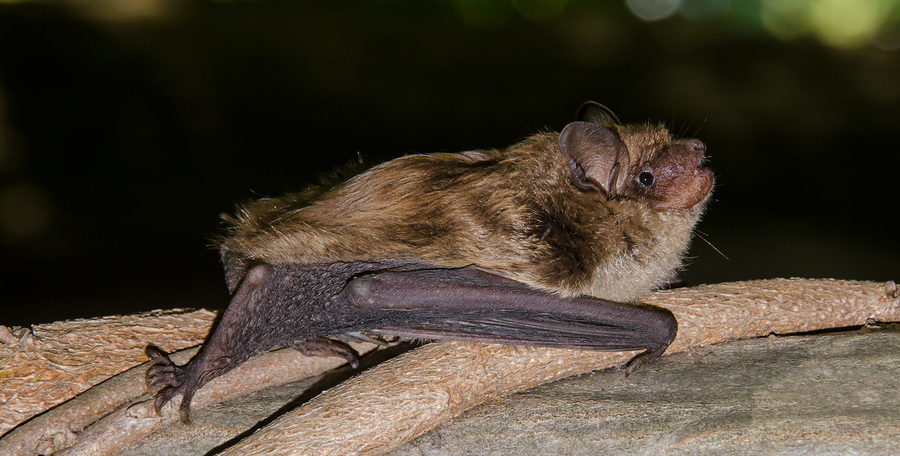
The Big Brown Bat (Eptesicus fuscus)
The Big Brown bat (Eptesicus fuscus) is part of the Eptesicus genus and fucus species. Adults have an average wingspan of 13 to 16 inches, and a body length of 3 1/2 to 5 1/2 inches. They are a little bigger as you can see! The rest of their biology and behaviors are the same, with just slight differences.
Their fur is the same as Little Brown bats, ranging in colors from dark browns to reddish hues and lighter-colored bellies. Gestation periods and breeding are the same for both species, as well. Females carry their young for 60 days, before giving birth to a single bat pup each year.
Mating season usually begins in early fall, while birthing season starts in May and continues through June. After 14 days in their mother’s care, bat pups are weaned from milk and taught to fly and hunt for insects. In contrast to Little Brown bats, Big Brown bats tend to roost in smaller colonies, ranging from as little as 20 bats, up to 500 or more.
The Little Brown Bat (Myotis lucifugus)
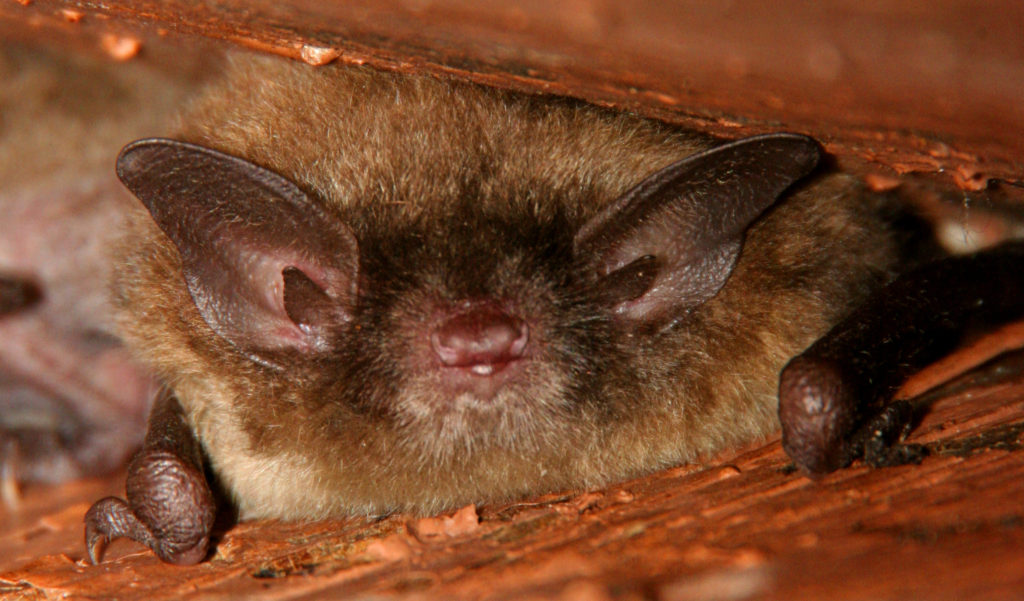
Little Brown bats are part of the Myotis genus and lucifugus species. Adults have an average wingspan of 9 to 11 inches, and a body length of 2 1/2 to 4 inches. They are small! Their fur ranges in colors of dark browns to reddish browns, with lighter-colored, pale tan bellies. Females carry their young for 60 days, before giving birth to a single bat pup each year.
Mating season usually begins in early fall, while birthing season starts in May and continues through July. After 14 days in their mother’s care, bat pups are weaned from milk and taught to fly and hunt for insects. Little Brown bats, like all bats, are nocturnal, which means they are active from dusk until dawn. Generally, this bat species remains in large numbers, with colonies reaching hundreds or even thousands of bats in some regions.
Typically, Little Brown bats roost in hollowed tree cavities, abandoned mines, caves, log piles, and similar private areas. They are a hibernating species, so in winter, they either migrate to winter roosts, or hibernate in caves, rock crevices, storm sewers, and if they can access them, our attics! As insectivores, Little Brown bats hunt for mosquitoes, gnats, moths, crane flies, beetles, mayflies, and other small flying insects. A single bat can consume more than 1,000 flying bugs in just one night!
Where to Get Humane Virginia Bat Control Near You
Call Virginia Bat Pros at 804-729-9097 when you need prompt and professional Virginia bat removal and control you can afford. We use safe and humane methods to deliver effective 24 hour bat control for residential and commercial properties throughout Virginia. We serve all of Virginia, including Richmond, Petersburg, Short Pump, Lynchburg, Charlottesville, Norfolk, Chesapeake, Newport News, Virginia Beach, and all of their surrounding areas.
